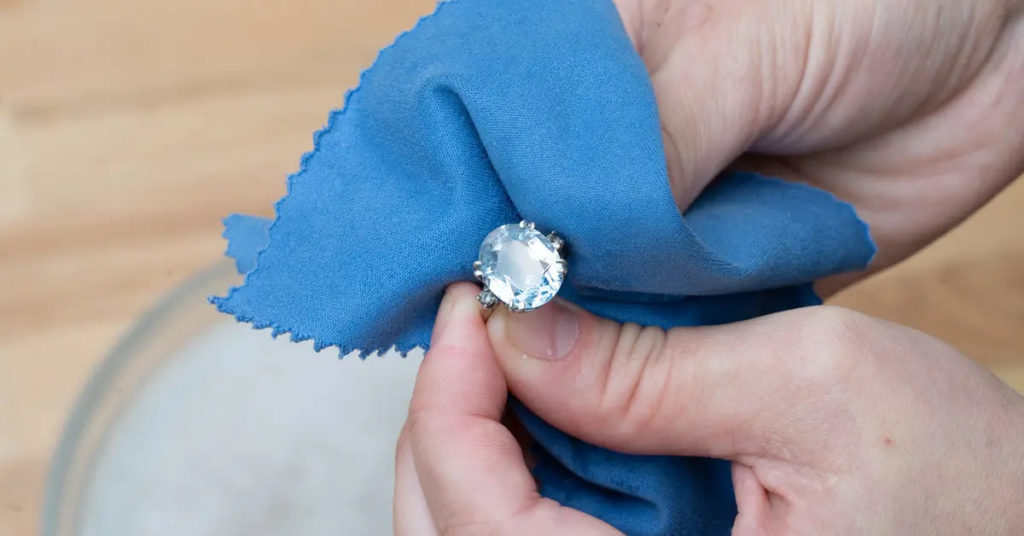Silver jewellery exudes timeless elegance, but over time it can tarnish and lose its shine. With the right approach, you can remove buildup and restore brilliance without risking damage. Whether you favor simple at-home remedies or specialized products, mastering gentle yet effective cleaning methods preserves your treasured pieces for years to come. Here’s how to keep your silver jewellery gleaming.
Understanding Silver Tarnish
Tarnish forms when silver reacts with sulfur compounds in the air or on your skin, creating a dull, dark layer called silver sulfide. Everyday activities—exposure to perfume, lotions, household chemicals, or even natural skin oils—accelerate tarnishing. Recognizing this helps you choose appropriate cleaning techniques.
The Chemistry Behind Tarnish
Silver (Ag) combines with hydrogen sulfide (H₂S) to form silver sulfide (Ag₂S). This reaction is superficial, so careful polishing or chemical conversion can remove it. Avoid harsh abrasives that scratch your pieces or strip away intentional patinas on designer items.
Daily Maintenance Tips
Regular light maintenance prevents heavy tarnish buildup and reduces the need for intensive cleaning sessions.

Gentle Wiping After Wear
Keep a soft, lint-free polishing cloth by your jewelry box. After wearing, gently rub each piece to remove skin oils and light surface dirt. This simple step restores surface shine and delays tarnish formation.
Proper Storage Practices
Store silver jewellery in airtight containers or sealable plastic bags to limit air exposure. Place anti-tarnish strips or silica gel packets inside to absorb moisture and sulfur compounds. Separating pieces prevents scratching and tangling.
Homemade Cleaning Solutions
For mild to moderate tarnish, DIY cleaners use everyday pantry ingredients. These formulas are budget-friendly and gentle on silver.
Baking Soda and Water Paste
Combine three parts baking soda with one part water to make a thick paste. Apply with a soft toothbrush or cloth, gently rubbing tarnished areas. Rinse thoroughly in warm water and dry with a microfiber cloth. Baking soda is mildly abrasive—use sparingly on heavily detailed pieces to avoid wearing down surfaces.
Aluminum Foil and Salt Bath
Line a glass or plastic bowl with aluminum foil, shiny side up. Place silver items on the foil, sprinkle in one tablespoon of salt and one tablespoon of baking soda, then pour in enough hot water to cover. The chemical reaction between aluminum and silver sulfide transfers tarnish to the foil, leaving your jewellery bright. After a few minutes, remove pieces, rinse, and dry.
White Vinegar and Baking Soda Soak
For intricate chains or heavily tarnished pieces, mix 1/2 cup of white vinegar with 2 tablespoons of baking soda in a bowl. Soak jewellery for 2–3 hours, then rinse and buff dry. Vinegar’s acidity dissolves tarnish gently, but prolonged exposure can affect certain gemstones or plated finishes—test on an inconspicuous spot first.
Commercial Cleaners and Their Use
When DIY methods aren’t enough, commercial products offer convenience and consistent results. Choose reputable brands and follow instructions carefully.
Silver Polishing Cloths
Pre-treated polishing cloths impregnated with anti-tarnish compounds remove tarnish and leave a protective coating. Simply rub each piece until tarnish lifts and the silver gleams. These cloths are ideal for quick touch-ups and maintaining regularly worn items.
Silver Dipping Solutions
Liquid dips dissolve tarnish quickly. Briefly immerse jewellery—typically for 5–10 seconds—rinse under running water, and dry thoroughly. Avoid leaving pieces in dips too long, as the chemicals can pit silver or harm delicate gemstones and organic inlays.
Ultrasonic Cleaners
Ultrasonic machines use high-frequency vibrations in a water-based solution to dislodge dirt and light tarnish. Place only sturdy silver pieces—avoid porous stones like opals or pearls. After a 3–5 minute cycle, rinse and polish with a soft cloth for optimal results.
Precautions and Safety
Not all cleaning methods suit every piece. Protect your jewellery by observing key precautions.
Avoiding Abrasive Materials
Never use steel wool, toothpaste, or harsh scouring pads. These abrasives can scratch silver’s surface and degrade fine details. Always opt for soft brushes, cloths, or non-abrasive pastes.
Caring for Gemstones and Platings
Silver jewellery often features gemstones, enamel, or plating. Many cleaning agents react poorly with these materials. Before applying any solution, remove stones if possible or cover them with clear nail polish to shield them. For plated items, limit cleaning frequency and choose ultra-gentle methods to prevent wearing away the plating layer.
Read Also : Custom vs. Ready-Made Jewellery: Pros, Cons & How to Decide
Conclusion
Keeping silver jewellery clean and lustrous requires understanding tarnish chemistry, practicing regular maintenance, and choosing appropriate cleaning methods. Daily gentle wiping and airtight storage slow tarnish buildup. Homemade solutions like baking soda paste or aluminum baths tackle moderate tarnish safely, while commercial cloths, dips, and ultrasonic cleaners serve heavy-duty needs. Always avoid harsh abrasives, protect gemstones, and test methods on inconspicuous areas. With these gentle and effective techniques, your silver pieces will continue to sparkle—ensuring lasting beauty and timeless style.

